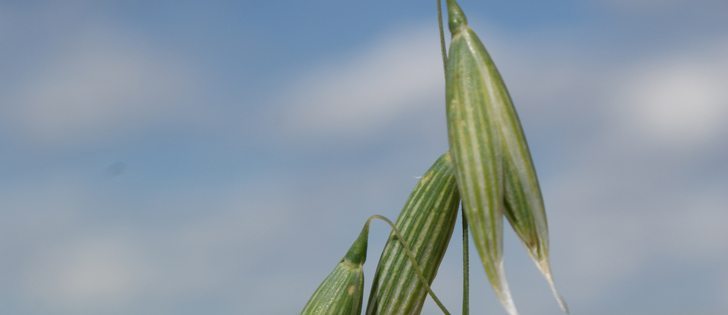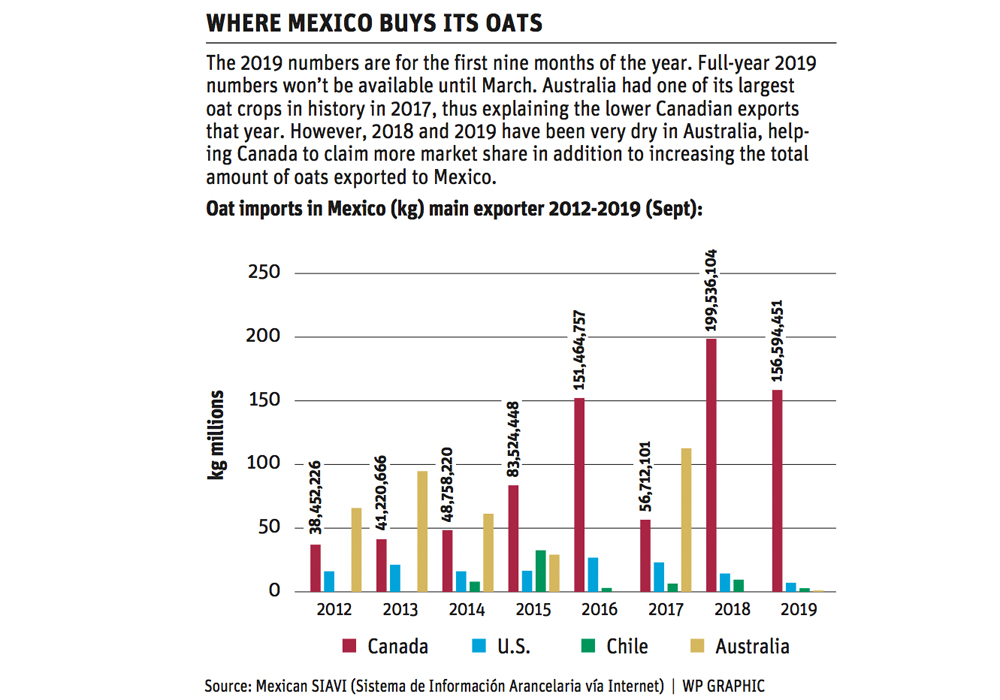Fundamentals bullish | Analyst says prces may ‘explode’ next autumn in there is a shortfall
When the markets tell you to seed almost anything but oats, why seed oats?
And when the weather tells you to seed wheat, why sow oats?
Those are questions prairie farmers face, and if oat prices don’t rise relative to other crops, many think its acreage could be lower than expected.
“We haven’t made up our mind yet, and we probably won’t until seeding time,” said long-time, dedicated oat grower Dwayne Anderson of Fosston, Sask., about the oats-versus-wheat-versus-barley decision.
“Anyone who’s got payments coming up and needs to lock in cash flow, your programs with feed barley are way better. And wheat is easy to grow and easy to sell.”
Read Also

Organic farmers urged to make better use of trade deals
Organic growers should be singing CUSMA’s praises, according to the Canadian Chamber of Commerce.
Oat prices recently shot higher, but missed most of the winter rally that lifted many crop prices.
The mid March rally did not improve oats’ relative returns outlook, because other crops rallied too.
When it comes to profitability per acre, oats still comes in at the bottom of the list.
In crop-to-crop comparisons all winter oats fared poorly, while both malting barley and feed barley have been among the most profitable. Spring wheat is in the middle of the pack.
Another strike against the crop is the difficultly in managing wild oat problems, so most farmers don’t have an inherent incentive to seed it instead of wheat.
Anderson said oats could become attractive to farmers if seeding windows and frost-free day calculations create the expectation of a short growing season, but right now the opposite appears likely. Farmers could soon be seeding, so why not seed wheat instead?
“Oats is really going to have a tough time getting acres,” said Anderson.
Chicago oat futures have been weak for months compared to other cereals. Some were surprised to see hedge funds and other speculative investment pools selling oat futures positions even while other crops were rallying.
Scott Merrihew of O’Bryan Commodities in Chicago, an active oat trader, said he thinks the funds were selling oats based on technical signals, but now seem to be moving into a neutral position. Without that pressure oats could become more tightly connected to corn, the main driver of feedgrain prices.
“It now feels like you’re going to get a bit closer correlation with what corn’s doing,” said Merrihew.
Corn prices tend to strongly lead oat prices, while wheat prices follow corn less reliably.
Merrihew thinks the bullish corn outlook compared to a less bullish oat outlook has caused some traders to lock in spreads by selling oats and buying corn, but that trade is probably coming to an end.
Farmers have become reluctant sellers of oats in recent months, hoping for better prices, but so far the market has disappointed.
Randy Strychar of Oatinsight.com said the funds have hammered oat prices all winter, even though his fundamental outlook is bullish for 2012-13. Commercial buyers and users of oats have tried at various times this winter to buy oats to strengthen prices and ensure farmers want to seed the crop, but each time funds piled in and drove down the price.
Strychar said 3.2 to 3.6 million acres are needed to meet demands, and farmers are generally believed to be planning to plant within that range. That leaves little room for error.
Strychar said oat prices need to rise 20 to 40 cents per bushel compared to wheat and barley to draw in more than 3.6 million acres.
However, he urges farmers to have faith in oats, even if the markets are doing nothing to support that faith. The supply and demand situation in 2012-13 could be extremely bullish, and prices could “explode” in November or December.
But at present prices, there’s no reason to lock in prices.
“We’re telling farmers to seed, not sell,” said Strychar. “We are way undervalued.”
















